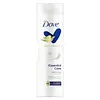What's inside
What's inside
 Key Ingredients
Key Ingredients

 Benefits
Benefits

 Concerns
Concerns

 Ingredients Side-by-side
Ingredients Side-by-side

Water
Skin ConditioningUrea
BufferingParaffinum Liquidum
EmollientDimethicone
EmollientPropylene Glycol
HumectantCetyl Alcohol
EmollientCetearyl Alcohol
EmollientCetearyl Ethylhexanoate
EmollientIsopropyl Myristate
EmollientHydroxyethyl Urea
HumectantPEG-8 Distearate
EmulsifyingGlyceryl Stearate
EmollientPhenoxyethanol
PreservativeParfum
MaskingPEG-100 Stearate
Caprylyl Glycol
EmollientAllantoin
Skin ConditioningTriethanolamine
BufferingCarbomer
Emulsion StabilisingTetrasodium Glutamate Diacetate
Hydroxyethyl Acrylate/Sodium Acryloyldimethyl Taurate Copolymer
Emulsion StabilisingPolyisobutene
PEG-7 Trimethylolpropane Coconut Ether
EmulsifyingHexyl Cinnamal
PerfumingLinalool
PerfumingWater, Urea, Paraffinum Liquidum, Dimethicone, Propylene Glycol, Cetyl Alcohol, Cetearyl Alcohol, Cetearyl Ethylhexanoate, Isopropyl Myristate, Hydroxyethyl Urea, PEG-8 Distearate, Glyceryl Stearate, Phenoxyethanol, Parfum, PEG-100 Stearate, Caprylyl Glycol, Allantoin, Triethanolamine, Carbomer, Tetrasodium Glutamate Diacetate, Hydroxyethyl Acrylate/Sodium Acryloyldimethyl Taurate Copolymer, Polyisobutene, PEG-7 Trimethylolpropane Coconut Ether, Hexyl Cinnamal, Linalool
Water
Skin ConditioningCyclopentasiloxane
EmollientEthylhexyl Cocoate
EmollientGlycerin
HumectantParaffinum Liquidum
EmollientCetyl PEG/PPG-10/1 Dimethicone
EmulsifyingCaprylyl Glycol
EmollientDisodium Phosphate
BufferingPhenoxyethanol
PreservativeParfum
MaskingParaffin
PerfumingCera Microcristallina
Emulsion StabilisingStearic Acid
CleansingHelianthus Annuus Seed Oil
EmollientTriolein
Skin ConditioningTocopherol
AntioxidantAlpha-Isomethyl Ionone
PerfumingBenzyl Alcohol
PerfumingCitronellol
PerfumingCoumarin
PerfumingHexyl Cinnamal
PerfumingLimonene
PerfumingLinalool
PerfumingWater, Cyclopentasiloxane, Ethylhexyl Cocoate, Glycerin, Paraffinum Liquidum, Cetyl PEG/PPG-10/1 Dimethicone, Caprylyl Glycol, Disodium Phosphate, Phenoxyethanol, Parfum, Paraffin, Cera Microcristallina, Stearic Acid, Helianthus Annuus Seed Oil, Triolein, Tocopherol, Alpha-Isomethyl Ionone, Benzyl Alcohol, Citronellol, Coumarin, Hexyl Cinnamal, Limonene, Linalool
Ingredients Explained
These ingredients are found in both products.
Ingredients higher up in an ingredient list are typically present in a larger amount.
Caprylyl Glycol is a humectant and emollient, meaning it attracts and preserves moisture.
It is a common ingredient in many products, especially those designed to hydrate skin. The primary benefits are retaining moisture, skin softening, and promoting a healthy skin barrier.
Though Caprylyl Glycol is an alcohol derived from fatty acids, it is not the kind that can dry out skin.
This ingredient is also used as a preservative to extend the life of products. It has slight antimicrobial properties.
Learn more about Caprylyl GlycolHexyl Cinnamal is a fragrance ingredient with a similar scent to jasmine. It can be naturally found in chamomile essential oil.
This ingredient is a known EU allergen and may sensitize the skin. The EU requires this ingredient to be listed separately on an ingredients list.
Hexyl Cinnamal is not water soluble but is soluble in oils.
Learn more about Hexyl CinnamalLinalool is a fragrance and helps add scent to products. It's derived from common plants such as cinnamon, mint, citrus, and lavender.
Like Limonene, this ingredient oxidizes when exposed to air. Oxidized linalool can cause allergies and skin sensitivity.
This ingredient has a scent that is floral, spicy tropical, and citrus-like.
Learn more about LinaloolParaffinum Liquidum is also known as liquid paraffin. It is a type of highly refined mineral oil.
Like other oils, Paraffinum Liquidum has emollient properties. Emollients help soothe and soften the skin. By creating a barrier to trap moisture within, emollients help keep your skin hydrated.
Paraffinum Liquidum does not irritate the skin and is non-comedogenic.
Learn more about Paraffinum LiquidumParfum is a catch-all term for an ingredient or more that is used to give a scent to products.
Also called "fragrance", this ingredient can be a blend of hundreds of chemicals or plant oils. This means every product with "fragrance" or "parfum" in the ingredients list is a different mixture.
For instance, Habanolide is a proprietary trade name for a specific aroma chemical. When used as a fragrance ingredient in cosmetics, most aroma chemicals fall under the broad labeling category of “FRAGRANCE” or “PARFUM” according to EU and US regulations.
The term 'parfum' or 'fragrance' is not regulated in many countries. In many cases, it is up to the brand to define this term.
For instance, many brands choose to label themselves as "fragrance-free" because they are not using synthetic fragrances. However, their products may still contain ingredients such as essential oils that are considered a fragrance by INCI standards.
One example is Calendula flower extract. Calendula is an essential oil that still imparts a scent or 'fragrance'.
Depending on the blend, the ingredients in the mixture can cause allergies and sensitivities on the skin. Some ingredients that are known EU allergens include linalool and citronellol.
Parfum can also be used to mask or cover an unpleasant scent.
The bottom line is: not all fragrances/parfum/ingredients are created equally. If you are worried about fragrances, we recommend taking a closer look at an ingredient. And of course, we always recommend speaking with a professional.
Learn more about ParfumPhenoxyethanol is a preservative that has germicide, antimicrobial, and aromatic properties. Studies show that phenoxyethanol can prevent microbial growth. By itself, it has a scent that is similar to that of a rose.
It's often used in formulations along with Caprylyl Glycol to preserve the shelf life of products.
Water. It's the most common cosmetic ingredient of all. You'll usually see it at the top of ingredient lists, meaning that it makes up the largest part of the product.
So why is it so popular? Water most often acts as a solvent - this means that it helps dissolve other ingredients into the formulation.
You'll also recognize water as that liquid we all need to stay alive. If you see this, drink a glass of water. Stay hydrated!
Learn more about Water